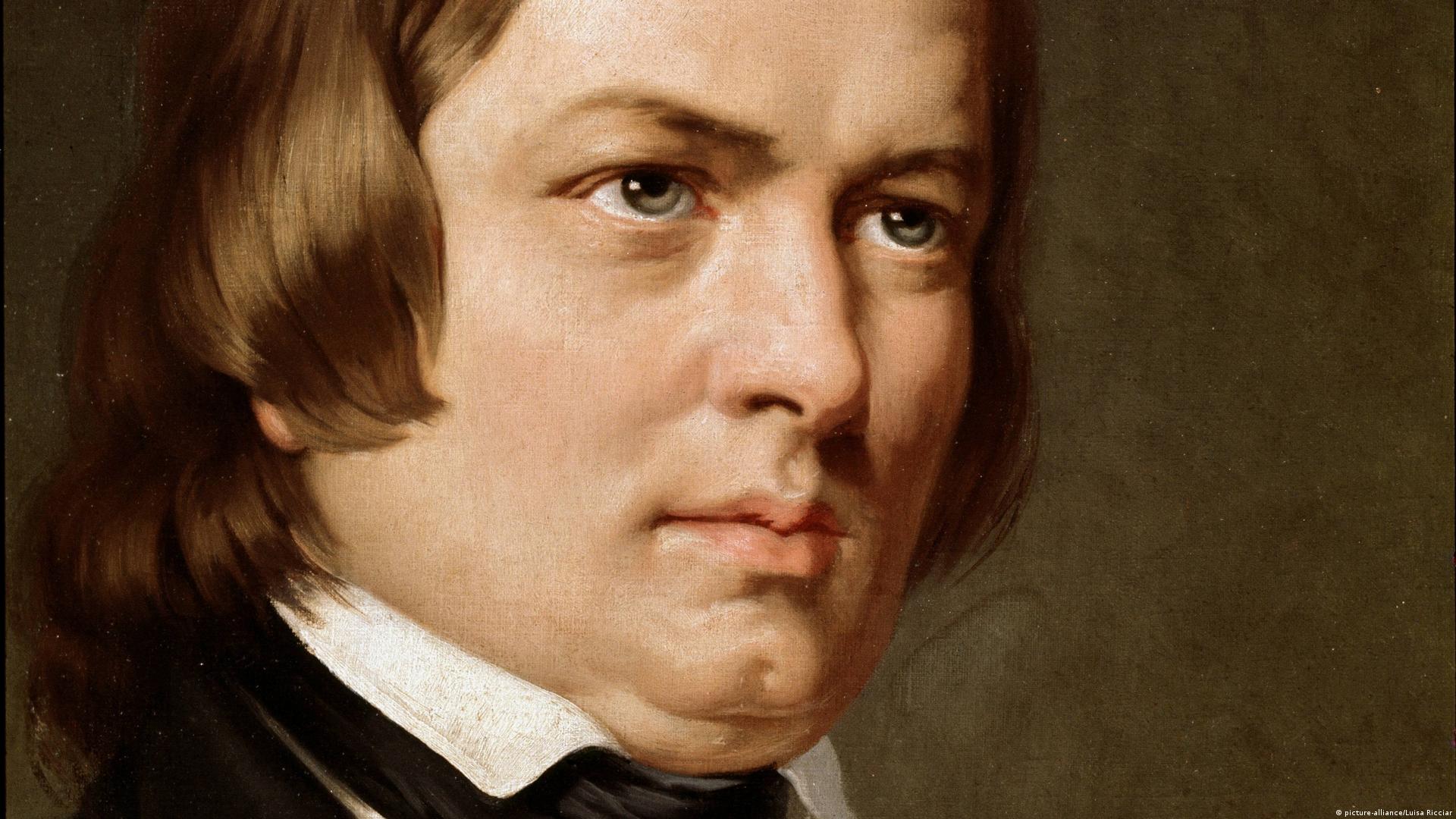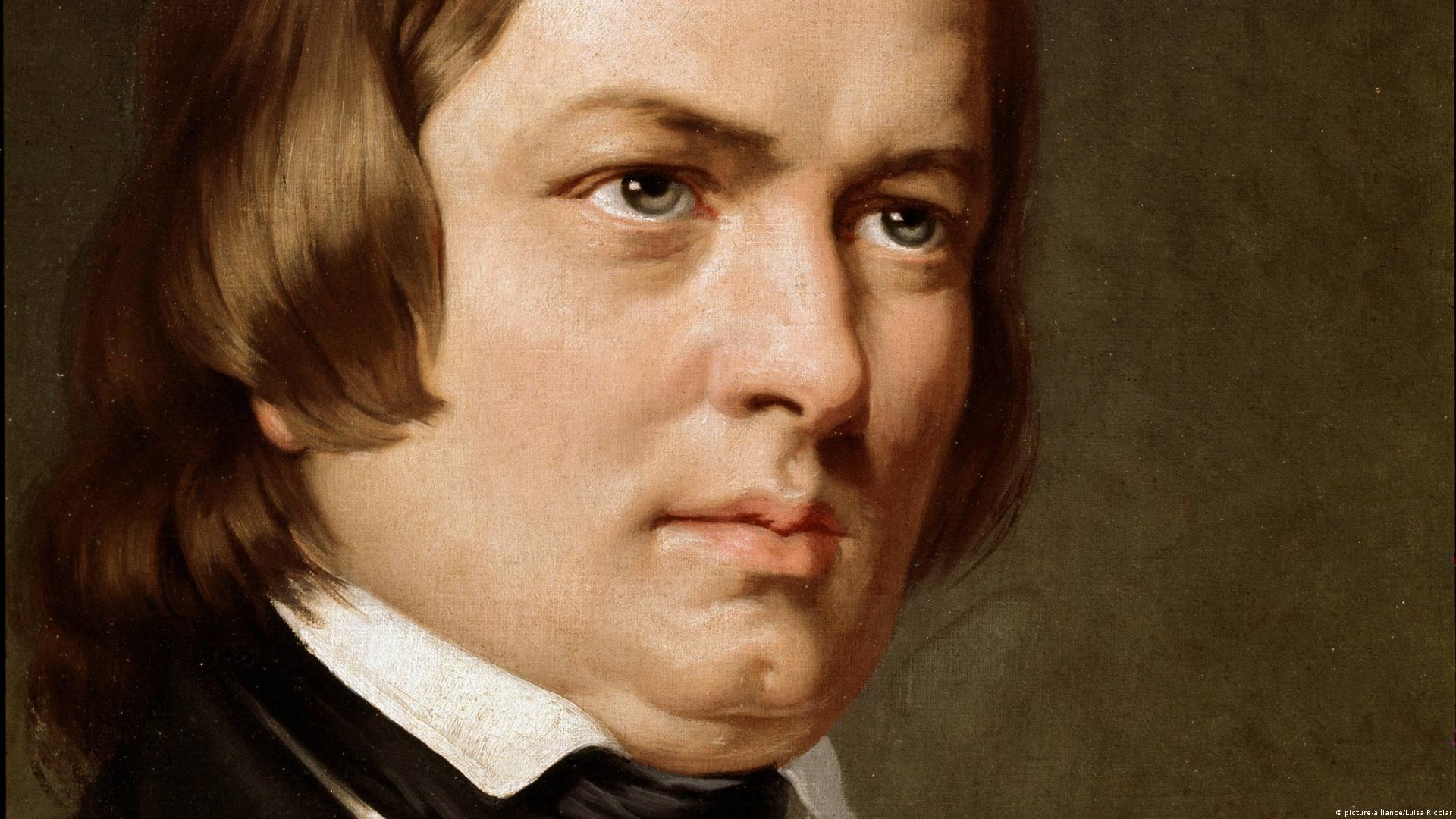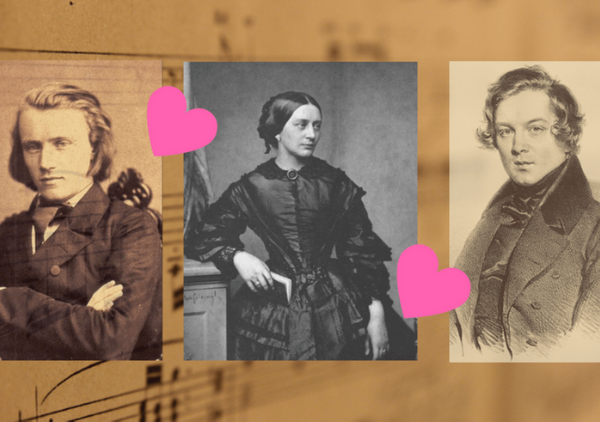Robert Schumann (1810–1856) remains one of the most influential composers of the Romantic era. His music, known for its emotional depth and innovative structures, continues to captivate audiences. Here’s a look at ten of Schumann’s most celebrated compositions, spanning different genres and showcasing his genius.
Robert Schumann was born on June 8, 1810, in Zwickau, Saxony, which was then part of the Kingdom of Saxony. He was the youngest of five children in a family that valued literature and music, as his father, August Schumann, was a bookseller and publisher. His mother, Johanna Christiane, was less enthusiastic about his musical ambitions, preferring he pursue a stable career. Schumann's early life was steeped in the arts, with a particular affinity for literature, which would later influence his songwriting.
Schumann began piano lessons at a young age, displaying considerable talent. At the age of seven, he composed his first piece of music. His father recognized his potential and arranged for him to study under Friedrich Wieck, a prominent piano teacher. Despite this encouragement, Schumann’s formal education was initially directed towards law, a profession his mother preferred for him.
Robert Schumann, a renowned German composer, left an indelible mark on the world of classical music with his exceptional talent and innovative compositions. Throughout his career, Schumann displayed profound emotional depth and a unique musical voice, capturing the essence of the Romantic era. In this blog post, we delve into the captivating world of Schumann's music and present to you the 10 best compositions that highlight his brilliance and artistic vision.
Robert Schumann, a renowned 19th-century German composer, was a true master of melodic expression. His compositions captured the essence of Romanticism and left an indelible mark on the world of classical music. Among his vast body of work, his songs stand out as gems that beautifully showcase his gift for melody and emotional depth. In this blog post, we delve into the world of Robert Schumann and explore seven of his best songs that have stood the test of time.
Clara Schumann, Robert Schumann, and Johannes Brahms are three of the most celebrated composers and pianists of the 19th century. Their musical talents and achievements are widely recognized and admired, but their personal lives are also full of drama and intrigue. In particular, the relationship between Clara, Robert, and Brahms has been the subject of much speculation and controversy, as they formed a complex and passionate love triangle that lasted for decades.
Robert Schumann (8 June 1810 – 29 July 1856) was a German composer, pianist, and influential music critic. He is widely regarded as one of the greatest composers of the Romantic era. Schumann left the study of law, intending to pursue a career as a virtuoso pianist. His teacher, Friedrich Wieck, a German pianist, had assured him that he could become the finest pianist in Europe, but a hand injury ended this dream. Schumann then focused his musical energies on composing.
In 1840, Schumann married Clara Wieck, after a long and acrimonious legal battle with her father, Friedrich, who opposed the marriage. A lifelong partnership in music began, as Clara herself was an established pianist and music prodigy. Clara and Robert also maintained a close relationship with German composer Johannes Brahms.
Until 1840, Schumann wrote exclusively for the piano. Later, he composed piano and orchestral works, and many Lieder (songs for voice and piano). He composed four symphonies, one opera, and other orchestral, choral, and chamber works. His best-known works include Carnaval, Symphonic Studies, Kinderszenen, Kreisleriana, and the Fantasie in C. Schumann was known for infusing his music with characters through motifs, as well as references to works of literature. These characters bled into his editorial writing in the Neue Zeitschrift für Musik (New Journal for Music), a Leipzig-based publication that he co-founded.
Schumann suffered from a mental disorder that first manifested in 1833 as a severe melancholic depressive episode—which recurred several times alternating with phases of "exaltation" and increasingly also delusional ideas of being poisoned or threatened with metallic items. What is now thought to have been a combination of bipolar disorder and perhaps mercury poisoning led to "manic" and "depressive" periods in Schumann's compositional productivity. After a suicide attempt in 1854, Schumann was admitted at his own request to a mental asylum in Endenich (now in Bonn). Diagnosed with psychotic melancholia, he died of pneumonia two years later at the age of 46, without recovering from his mental illness.
Schumann Biography
#MusicHistory
#Biography
#Schumann
We are a educational channel specializing in history of classical music.
Our goal is to spread classical music to the greatest number of people.
Explore our channel and listen to more works by Mozart, Chopin, Beethoven, Tchaikovsky, Bach, Haydn, Schumann, Schubert, Vivaldi, Dvorak, Debussy and more! I hope you enjoy it and don't forget to Subscribe. 🎧
🔴 Facebook: https://www.facebook.com/TopClassicalMusic
🔴 WebSite: https://www.melhoresmusicasclassicas.com
The Toccata in C major, Op. 7 by Robert Schumann, was completed in 1830 and revised in 1833. The piece is in sonata-allegro form.
The work was originally titled Etude fantastique en double-sons (Fantastic Study in Double Notes), and was infamously referred to by Schumann as the "hardest piece ever written"—to this day it remains as "one of the most ferociously difficult pieces in the piano repertoire".
A series of alternating chords introduce the main theme. The development features rapid unison octaves and counterpoint. There is advanced chromaticism and syncopation throughout the work. A typical performance of this piece (with the repeat sign observed) can last anywhere from six to eight minutes.
Schumann dedicated the work to his friend Ludwig Schuncke, who had dedicated his Grande Sonata in G minor, Op. 3, to Schumann. It is partially based on the Czerny Toccata in C major, Op. 92, which Clara Schumann spent much of her youth practicing.
Schumann - Toccata, Op. 7
#MusicHistory
#Biography
#Schumann
We are a educational channel specializing in history of classical music.
Our goal is to spread classical music to the greatest number of people.
Explore our channel and listen to more works by Mozart, Chopin, Beethoven, Tchaikovsky, Bach, Haydn, Schumann, Schubert, Vivaldi, Dvorak, Debussy and more! I hope you enjoy it and don't forget to Subscribe. 🎧
🔴 Facebook: https://www.facebook.com/TopClassicalMusic
🔴 WebSite: https://www.melhoresmusicasclassicas.com
Schumann - Symphony No. 1 - Music | History
The Symphony No. 1 in B♭ major, Op. 38, also known as the Spring Symphony, is the first symphonic work composed by Robert Schumann.
Although he had made some "symphonic attempts" in the autumn of 1840 soon after he married Clara Wieck, he did not compose his first symphony until early 1841. Until then, Schumann was largely known for his works for the piano and for voice. Clara encouraged him to write symphonic music, noting in her diary, "it would be best if he composed for orchestra; his imagination cannot find sufficient scope on the piano... His compositions are all orchestral in feeling... My highest wish is that he should compose for orchestra—that is his field! May I succeed in bringing him to it!"
Schumann sketched the symphony in four days from 23 to 26 January and completed the orchestration by 20 February. The premiere took place under the baton of Felix Mendelssohn on 31 March 1841 in Leipzig, where the symphony was warmly received. According to Clara's diary, the title "Spring Symphony" was bestowed upon it due to Adolf Böttger's poem Frühlingsgedicht. The symphony's opening has traditionally been associated with the closing lines of Böttger's poem, "O wende, wende deinen Lauf/Im Thale blüht der Frühling auf!" (“O, turn, O turn and change your course/In the valley, Spring blooms forth!"). This view has been challenged, and the call of a Leipzig nightwatchman has been mentioned as an alternative source.
In a letter to Wilhelm Taubert, Schumann wrote:
Could you breathe a little of the longing for spring into your orchestra as they play? That was what was most in my mind when I wrote [the symphony] in January 1841. I should like the very first trumpet entrance to sound as if it came from on high, like a summons to awakening. Further on in the introduction, I would like the music to suggest the world’s turning green, perhaps with a butterfly hovering in the air, and then, in the Allegro, to show how everything to do with spring is coming alive... These, however, are ideas that came into my mind only after I had completed the piece.
We are a cultural channel specializing in classical music.
Our goal is to spread classical music to the greatest number of people. Here you will find musics for studying, concentration, relaxing and working.
Explore our channel and listen to more works by Mozart, Chopin, Beethoven, Tchaikovsky, Bach, Haydn, Schumann, Schubert, Vivaldi, Dvorak, Debussy and more! I hope you enjoy it and don't forget to Subscribe. 🎧
🔴 Facebook: https://www.facebook.com/TopClassicalMusic
🔴 WebSite: http://www.melhoresmusicasclassicas.com
#MusicHistory
#ClassicalMusic
#Schumann
Schumann - Symphony No. 3 in E flat major - Music | History
The Symphony No. 3 in E♭ major, Op. 97, also known as the Rhenish, is the last symphony composed by Robert Schumann (1810–1856), although not the last published. It was composed from 2 November to 9 December 1850, and comprises five movements:
I. Lebhaft
II. Scherzo: Sehr mäßig (in C major)
III. Nicht schnell (in A♭ major)
IV. Feierlich (in E♭ minor)
V. Lebhaft
The Third Symphony is scored for two flutes, two oboes, two clarinets in B♭, two bassoons, four French horns in E♭, two trumpets in E♭, three trombones, timpani and strings. It premiered on 6 February 1851 in Düsseldorf, conducted by Schumann himself, and was received with mixed reviews, "ranging from praise without qualification to bewilderment". However, according to Peter A. Brown, members of the audience applauded between every movement, and especially at the end of the work when the orchestra joined them in congratulating Schumann by shouting "hurrah!".
Throughout his life, Schumann explored a diversity of musical genres, including chamber, vocal, and symphonic music. Although Schumann wrote an incomplete G minor symphony as early as 1832–33 (of which the first movement was performed on two occasions to an unenthusiastic reception), he only began seriously composing for the symphonic genre after receiving his wife's encouragement in 1839.
Schumann gained quick success as a symphonic composer following his orchestral debut with his warmly-received First Symphony, composed in 1841 and premiered in Leipzig with Felix Mendelssohn conducting. The work which was later to be published as his Fourth Symphony was also finished in 1841. In 1845 he composed his C major Symphony, which was published in 1846 as No. 2, and, in 1850, his Third Symphony. By the end of his career Schumann had composed a total of four symphonies.
The published numbering of the symphonies is not chronological because his Fourth Symphony of 1841 was not well received at its Leipzig premiere; Schumann withdrew the score and revised it ten years later in Düsseldorf. This final version was published in 1851 after the "Rhenish" Symphony was published.
We are a cultural channel specializing in classical music.
Our goal is to spread classical music to the greatest number of people. Here you will find musics for studying, concentration, relaxing and working.
Explore our channel and listen to more works by Mozart, Chopin, Beethoven, Tchaikovsky, Bach, Haydn, Schumann, Schubert, Vivaldi, Dvorak, Debussy and more! I hope you enjoy it and don't forget to Subscribe. 🎧
🔴 Facebook: https://www.facebook.com/TopClassicalMusic
🔴 WebSite: http://www.melhoresmusicasclassicas.com
#MusicHistory
#ClassicalMusic
#Schumann
Schumann - Fantasiestücke, Op. 12 - Music | History
Robert Schumann's Fantasiestücke, Op. 12, is a set of eight pieces for piano, written in 1837. The title was inspired by the 1814–15 collection of novellas, essays, treatises, letters, and writings about music, Fantasiestücke in Callots Manier (which also included the complete Kreisleriana, another source of inspiration for Schumann) by one of his favourite authors, E. T. A. Hoffmann. Schumann dedicated the pieces to Fräulein Anna Robena Laidlaw, an accomplished and attractive 18-year-old Scottish pianist with whom Schumann had become good friends.
Schumann composed the pieces with the characters Florestan and Eusebius in mind, representing the duality of his personality. Eusebius depicts the dreamer in Schumann while Florestan represents his passionate side. These two characters parlay with one another throughout the collection, ending self-reflectively with Eusebius in "Ende vom Lied".
We are a cultural channel specializing in classical music.
Our goal is to spread classical music to the greatest number of people. Here you will find musics for studying, concentration, relaxing and working.
Explore our channel and listen to more works by Mozart, Chopin, Beethoven, Tchaikovsky, Bach, Haydn, Schumann, Schubert, Vivaldi, Dvorak, Debussy and more! I hope you enjoy it and don't forget to Subscribe. 🎧
🔴 Facebook: https://www.facebook.com/TopClassicalMusic
🔴 WebSite: http://www.melhoresmusicasclassicas.com
#MusicHistory
#ClassicalMusic
#Schumann







